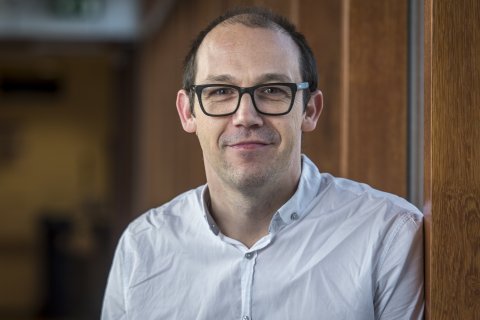Fighting cancer with our immune system
Utrecht Molecular Immunology Hub

As a blood cancer doctor, I see many cancer patients who do not respond well to treatment or who suffer from serious side effects when treated with currently available therapies. These shortcomings inspire me since many years to continuously develop novel therapies for our patients. In Utrecht, I’m able to combine the pragmatic approach of “how do we treat patients from day to day” with “how can we create superior therapeutic interventions”. To do so, we need to better understand on a molecular level treatment mechanism of currently used interventions, as well as to build on our daily shortcomings a better science for improved therapies.
Traditionally, cancer is thought of as a disease of the genome, caused by defects or mutations in our DNA that make cells grow out of control. Because cancer is really a constellation of diseases and because each patient responds differently to treatment, designing effective and broadly-applicable cancer drugs is difficult. Yet, with new insights into the biology of cancer, promising new approaches are on the horizon. A telling example is recent research aimed at boosting our immune system in response to cancer. We can now engineer immune cells to recognize specific changes on cancer cells.
Cancer is really a constellation of diseases
Detecting cancer as metabolic disease?
From a therapeutic point of view, this may be a good thing, because metabolic changes in a cell occur very early in cancer and don’t seem to be dependent on the genetic changes that are typical for tumor cells. Even at this early stage, the immune system can detect metabolic changes in cancer cells that have very few genetic abnormalities. My group has identified and characterized a new sensor that is instrumental in this process. This sensor is a gamma delta T-cell receptor (γδ TCR) that scouts for altered lipid metabolism in cancer cells. Unfortunately, the replication capacity of the immune cells that carry this sensor is low, making it difficult to generate adequate amounts for therapy or resulting in a quick elimination of cells once stimulated or transferred in human.
Engineering a new type of immune cell
To overcome physiological weaknesses of γδT cells, but also to use their powerful tumor-sensing receptors, we uncovered how this receptor recognizes cancer and also developed strategies to overcome the major weaknesses of γδ T cells in advanced cancer patients, such as the inability to rapidly expand and kill tumors. We’ve taken another type of T cell - the alpha beta T cell (αβT cell), which has good proliferation capacity but lacks appropriate tumor reactivity - and engineered a well-defined γδT-cell receptor with strong anti-cancer reactivity onto it. This new type of cell, so called “TEGs”, combines the strengths of both original cell types: it has the ability to specifically recognize malignant transformation of a cell; it has the ability to proliferate well; and even more importantly, it can effectively target a broad range of tumor cells. In 2015, we established the UMCU-spinoff company GADETA, based on this innovative immunotherapy and will soon conduct a phase I clinical trial in advanced cancer patients.
Exploring this novel type of receptor is just the tip of the iceberg. Because utilizing the γδ TCR mode of recognition for cancer detecting is so novel, many other subtypes may also be of value in the near future. This is where the Molecular Immunology Hub comes into play and connecting diverse parties together will ensure our strong position in this emerging field of immunotherapy.
The recent success of our spin off company Gadeta nicely illustrates how excellent science and entrepeneurship creates true impact.
We uncovered how tγδ T-cell receptor recognizes cancer and also developed strategies to overcome the major weaknesses of γδ T cells in advanced cancer patients
The hub will bring our science to patients
The Molecular Immunology Hub is a bridging platform that can mitigate many risks of early drug developments. Within our academic environment, we can bring a new asset (potential therapeutic candidate) to a certain stage until the new compound is well enough defined to be considered lower risk for a biotech or pharma company for a more advanced clinical development. One example is the need to fully characterize other subtypes of γδ TCR, both molecularly and structurally, so that we can understand what these receptors recognize and bind to, how they bind and how they function.
The University Medical Center Utrecht and Utrecht University have a treasure of excellent scientists who are working on these fundamental scientific questions in complementary areas of expertise. Both organizations are located at the Utrecht Science Park, which encompasses numerous startups and industry partners. This is fertile ground inspiration and innovation, and the hub is gathering together previously loose connections and solidifying them.
Through the hub, we expect that we’ll be able move γδ TCR science forward quickly into translational application, thereby supporting early and late stage development of clinical compounds, which will create new funding sources and stronger connections with biotech and pharmaceutical industry. Together, we hope that we can co-develop our technologies and inventions so that we can target more specifically broader patient populations and translate these findings into daily clinical practice.
Prof. Jürgen Kuball
Department of Hematology Laboratory of Translational Immunology
UMC Utrecht

